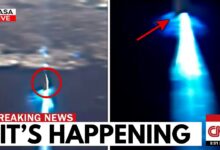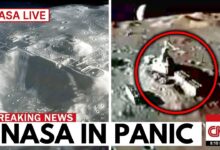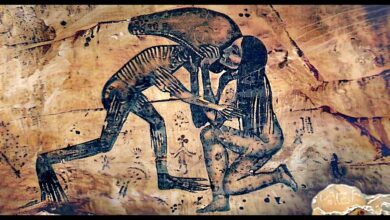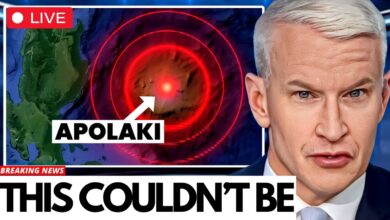Pacific Ring of Fire: The World’s Deadliest Fault Lines Are Reactivating!
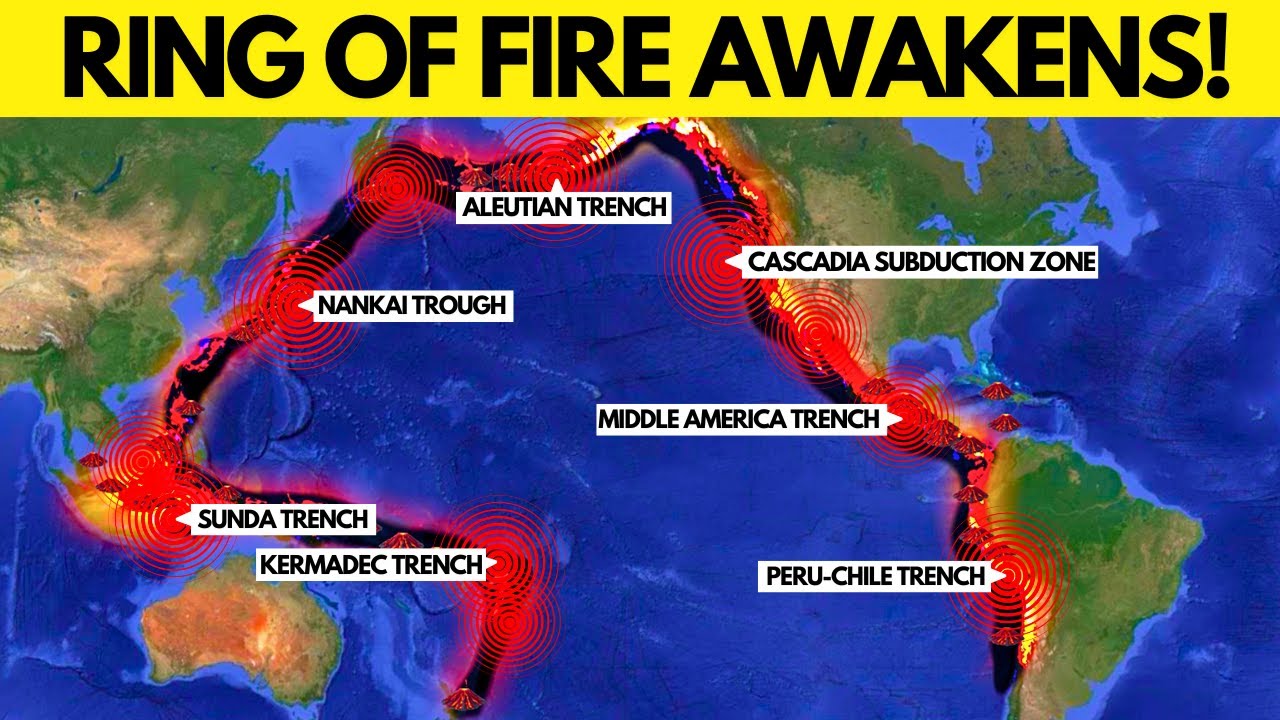
Beneath the shimmering waters of the Pacific Ocean, a giant sleeps — a fiery arc circling the ocean basin, waiting silently. But that silence is beginning to break. Over the past year, volcanoes have erupted in unison. Earthquakes have rocked from Chile to Japan, while deep beneath the ocean floor, tectonic plates are shifting unsteadily. This is the Pacific Ring of Fire — a vast geological band responsible for 90% of the world’s earthquakes and three-quarters of its volcanic eruptions. And it’s waking up.
What happens when the most volatile region on the planet shifts all at once? Is a cascading disaster brewing, waiting for the spark that will set off a global seismic upheaval? Scientists are racing to decipher the warning signs: moving magma, shifting crust, and rising stress on centuries-old faults. From the shadow of Alaska’s restless volcanoes to the deep trenches off the coast of Japan, evidence is mounting that the Ring of Fire is entering a new era of chaos — and unimaginable dangers for the millions who live in its shadow.
Stretching more than 40,000 kilometers in a giant horseshoe shape, the Ring of Fire cuts through many of the world’s most populous and economically vital regions. The region is home to about 75% of the world’s active volcanoes and 90% of its earthquakes. Throughout the 21st century, there have been only sporadic eruptions and aftershocks, but recently a worrying trend has emerged: earthquakes are clustering, volcanoes are waking up, and tectonic stress is increasing in unison. From Alaska, Indonesia, Chile to Japan, it seems that the Earth is about to enter a new cycle of upheaval.
The Ring of Fire is formed by the constant collision of tectonic plates. Along this belt, the Pacific Plate converges with several other large plates such as the North American, Eurasian, Philippine and Indo-Australian plates. As these plates slide past each other, sink or collide, the enormous energy stored underground is released in volcanic eruptions, earthquakes and tsunamis. The most powerful geological interactions occur at subduction zones, where one plate pushes under another, creating intense friction and melting rock into magma.
Throughout history, the Ring of Fire has been the epicenter of many devastating natural disasters. The 2004 Indian Ocean earthquake and tsunami claimed more than 230,000 lives, and the 2011 Tohoku earthquake in Japan, a magnitude 9.1 earthquake that triggered a tsunami that devastated the Fukushima nuclear power plant, killing more than 15,000 people. These disasters were heartbreaking testaments to the destructive power of the Ring of Fire. But today, growing signs of unrest suggest that this is not just a thing of the past — but a harbinger of things to come.
Over the past two years, the Ring of Fire has shown signs of reactivation. In Indonesia — one of the world’s most volcanically active countries — Mount Ruang erupted violently in April 2024, sending a column of ash tens of kilometers high, grounding flights and forcing thousands to evacuate. At the same time, other volcanoes such as Semeru, Merapi and Anak Krakatau have entered new phases of activity, raising concerns among geologists about a broader magma movement in the region.
In the Philippines, Taal and Mayon volcanoes are becoming more dangerous. Taal — which erupted in 2020 — began swelling again in 2023, spewing toxic gases and triggering frequent seismic events beneath its crater lake. Mayon, known for its perfect cone and history of destruction, has shown signs of increased lava flows and glowing at night — potential signs of a major eruption.
Further afield in Japan, Sakurajima has also increased its activity, spewing rocks and ash into nearby towns. Repeated earthquakes near the Nankai Trench — an area that can produce earthquakes of magnitude 8 or higher — are raising fears of a long-predicted disaster. Japan, with its advanced seismic monitoring network, has repeatedly warned over the past year that these tremors could be a sign of a major earthquake.
In the eastern Pacific, Chile and Peru have also seen increased seismic activity. Chile’s Nevados de Chillán volcanic complex and Peru’s Ubinus mountain have both seen increased eruptions and ground deformation. Chile’s seismic monitoring system has detected increased seismicity along the boundary between the Nazca and South American plates — which produced the 1960 Valdivia earthquake, which had a magnitude of 9.5, the strongest ever recorded.
In Alaska, which sits on the Aleutian Trench, the Shishaldin, Tanaga, and Great Sitkin volcanoes are all expected to become more active in 2023–2024. Under the ocean floor, deep earthquakes in the Aleutian Trench could be a sign of tectonic stress building up—a precursor to tsunami-generating quakes. Even quiet regions like the U.S. Pacific Northwest and Northern California are seeing unusual seismic activity. The Cascadia subduction zone—quiet for more than 300 years—is being viewed as a “sleeper” about to awaken, with the potential to generate magnitude 9 earthquakes and tsunamis that could devastate coastal towns from Northern California to British Columbia.
Taken individually, these events may be typical of the geologically active region. But taken together, they raise a more serious question: Are we witnessing a full-blown awakening of the Ring of Fire? Is there a grand tectonic pattern unfolding beneath our feet?
Recent research suggests that seismic and volcanic activity may occur in cycles or as chain reactions. One pattern that has gained attention is “seismic triggering” — when a large earthquake or eruption can shift pressure and stimulate faults and magma systems thousands of miles away. In addition, “slow slip” — silent movements along faults that don’t cause immediate seismicity — can be a precursor to major earthquakes.
Satellite data, especially from interferometric radar (InSAR), have detected tiny ground deformations — sometimes just a few millimeters per year — that signal rising magma or building tectonic stress. When this data is combined with seismic, gas emissions, and thermal imaging information, a clear pattern emerges: The Ring of Fire is not just churning, it’s synchronizing.
In 2023, a global study from Stanford University and the University of Tokyo found that the Pacific Plate may be entering a new phase of stress. Their model, based on decades of crustal motion data, indicates that interactions between the plates are intensifying — opening the door to decades of seismic upheaval.
If the Ring of Fire is indeed entering a period of heightened activity, the consequences will be far more than just regional. A major earthquake in Japan could disrupt global supply chains. A volcanic eruption in the Philippines could release enough sulfur dioxide to cool the global climate. A tsunami originating in Chile could cross the Pacific in hours, devastating coastal cities from Oceania to North America.
Rapid urbanization, climate-driven migration, and lax enforcement of building codes in many places leave tens of millions of people vulnerable. While modern technology has improved our ability to predict in advance, pinpointing the exact time and location of an earthquake or volcanic eruption remains beyond our capabilities. What we can do is improve our forecasting models, strengthen our infrastructure, and invest heavily in early warning systems.
Japan and Chile have made significant progress in disaster preparedness. Early earthquake warning systems, tsunami modeling, and public education campaigns have saved countless lives. However, many countries in the Ring of Fire region are still ill-prepared. Scientific cooperation, data sharing, and funding for geological research are urgently needed. Global monitoring systems need to be expanded and upgraded, and volcano monitoring stations equipped with real-time sensors.
As magma flows and tectonic plates grow more unstable beneath our feet, humanity is faced with forces beyond our control. But while we can’t stop the Earth from changing, we can choose how we respond: listen to the warnings, learn from the past, and act before the next earthquake, tsunami, or eruption occurs.
